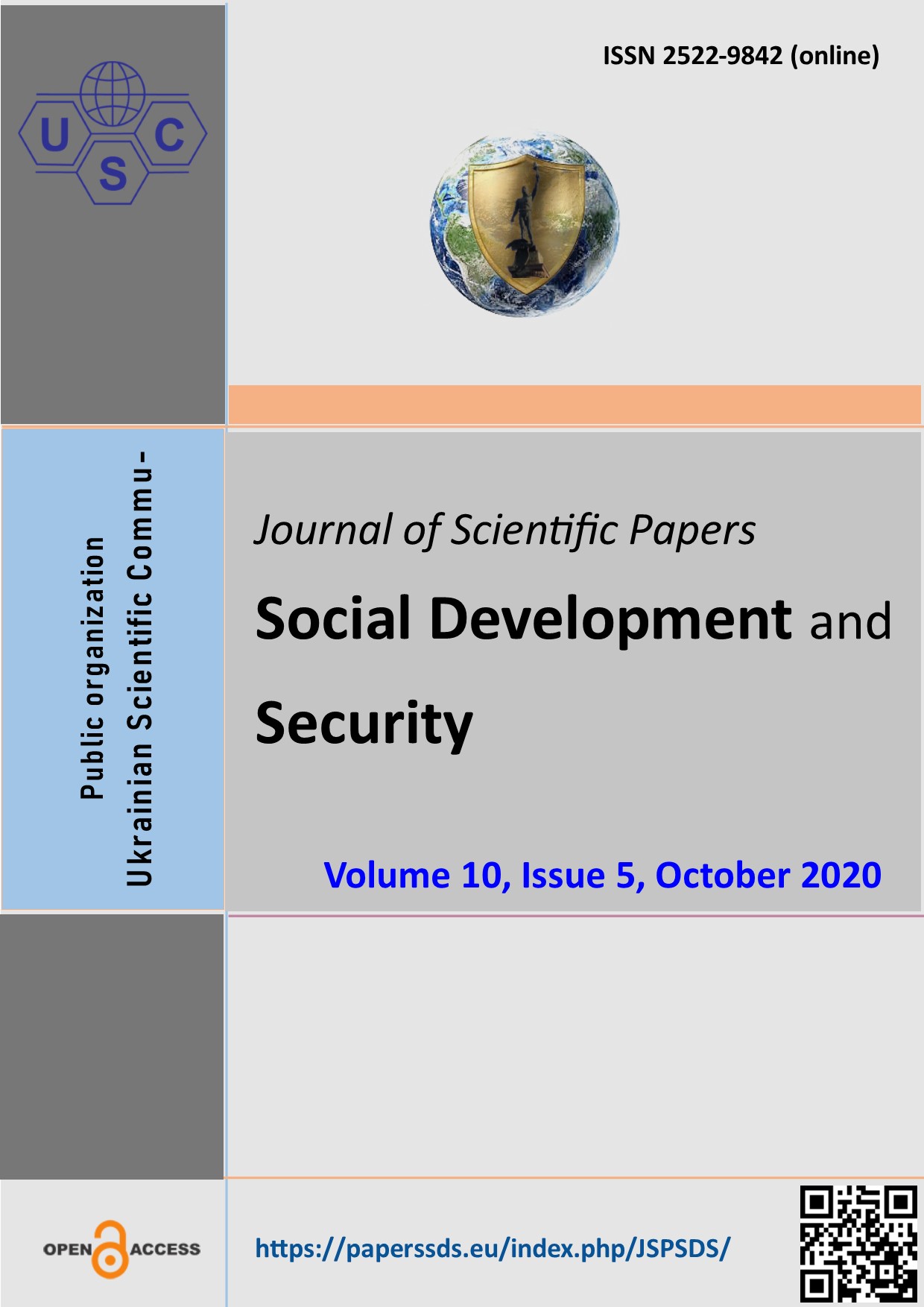Improving the partial method of optimizing the route of the material resources transportation
Abstract
In the article on the basis of the analysis of the system of transportation of material means of the Armed Forces of Ukraine the research concerning improvement of a partial technique of optimization of a route of transportation of material means of the Armed Forces of Ukraine is carried out. Today, the existing methods are partial in nature and do not take into account the new factors of rationality and optimization of the route, which in modern conditions significantly affect the efficiency of the system of transportation of material resources. One of the main tasks of the transportation system is the timeliness, completeness of transportation and minimization of costs associated with bringing the material flow from the primary source (manufacturer, supplier) to the final consumer (unit).
The study on the optimization of material transportation routes identifies the shortest path leading from the source of supply to the destination in the connected network at specified distances associated with each edge of the network.
The study is to determine the optimal route for the passage of the network between points on the associated roads, with a minimum total length of the distance traveled using network planning methods.
Downloads
References
Voyenna doktryna Ukrayiny: Ukaz Prezydenta Ukrayiny vid 24.09.2015 r. № 555/2015). Kyiv: APU, 2015. Available from: https://zakon.rada.gov.ua/laws/show/555/2015.
Stratehiya natsionalʹnoyi bezpeky Ukrayiny: Ukaz Prezydenta Ukrayiny vid 14.09.2020 r. №392/2020. Kyiv: APU, 2020.
Kyvliuk, V., & Gannenko, Y. (2018). Improvement of the system of material resources of the armed forces of Ukraine. Journal of Scientific Papers ʽʽSocial Development and Security’’, 4(2), 49 - 58. https://doi.org/10.5281/zenodo.1231404
Klontsak M. Y., Kyvlyuk V. S., Loza V. M., Shevchenko V.V. Vyroblennya yedynykh pohlyadiv shchodo stvorennya suchasnoyi derzhavnoyi systemy lohistyky Zbroynykh Syl Ukrayiny: zbir. nauk. pratsʹ viysʹkovoho instytutu kyyivsʹkoho natsionalʹnoho universytetu imeni Tarasa Shevchenka. Vyp. 51. 2016. S. 100-109. Available from: http://nbuv.gov.ua/UJRN/Znpviknu_2016_51_15.
Pro zatverdzhennya Osnovnykh polozhenʹ lohistychnoho zabezpechennya ZS Ukrayiny: nakaz Ministerstva oborony Ukrayiny vid 11.10.2016 r. № 522.
Doktryna ob'yednana lohistyka: nakaz Heneralʹnoho shtabu ZS Ukrayiny vid 30.09.2020. Available from: https://elib.nuou.org.ua/katalog/doktrina-ob%D1%94dnana-log%D1%96stika.html.
Voyenna nauka, yak fundamentalʹna osnova naukovykh doslidzhenʹ i pidhotovky fakhivtsiv vyshchykh navchalʹnykh zakladiv Zbroynykh Syl Ukrayiny: pidruchnyk. ch.I. NUOU. Kyiv, 2002. inv.176824. 559 s.
Osnovy modelyuvannya boyovykh diy viysʹk. Pidruchnyk. Kyiv: NAOU, 2005. 481 s.
Matveychuk F. A. Spravochnyk po yssledovanyyu operatsiy: Voenyzdat. Moscow, 1979. 368 s.
Frénk Kharary. Teoryya hrafov, Moscow, 1973, 300 s.
Tkach, M. (2020). Patterns of development of national power: historical experience of the world states. Political Science and Security Studies Journal, 1(1), 40-48. DOI: 10.5281/zenodo.4256820
Abstract views: 331 PDF Downloads: 266
Copyright (c) 2020 Iurii Hannenko

This work is licensed under a Creative Commons Attribution 4.0 International License.
The authors agree with the following conditions:
1. Authors retain copyright and grant the journal right of first publication (Download agreement) with the work simultaneously licensed under a Creative Commons Attribution License that allows others to share the work with an acknowledgment of the work's authorship and initial publication in this journal.
2. Authors have the right to complete individual additional agreements for the non-exclusive spreading of the journal’s published version of the work (for example, to post work in the electronic repository of the institution or to publish it as part of a monograph), with the reference to the first publication of the work in this journal.
3. Journal’s politics allows and encourages the placement on the Internet (for example, in the repositories of institutions, personal websites, SSRN, ResearchGate, MPRA, SSOAR, etc.) manuscript of the work by the authors, before and during the process of viewing it by this journal, because it can lead to a productive research discussion and positively affect the efficiency and dynamics of citing the published work (see The Effect of Open Access).
















